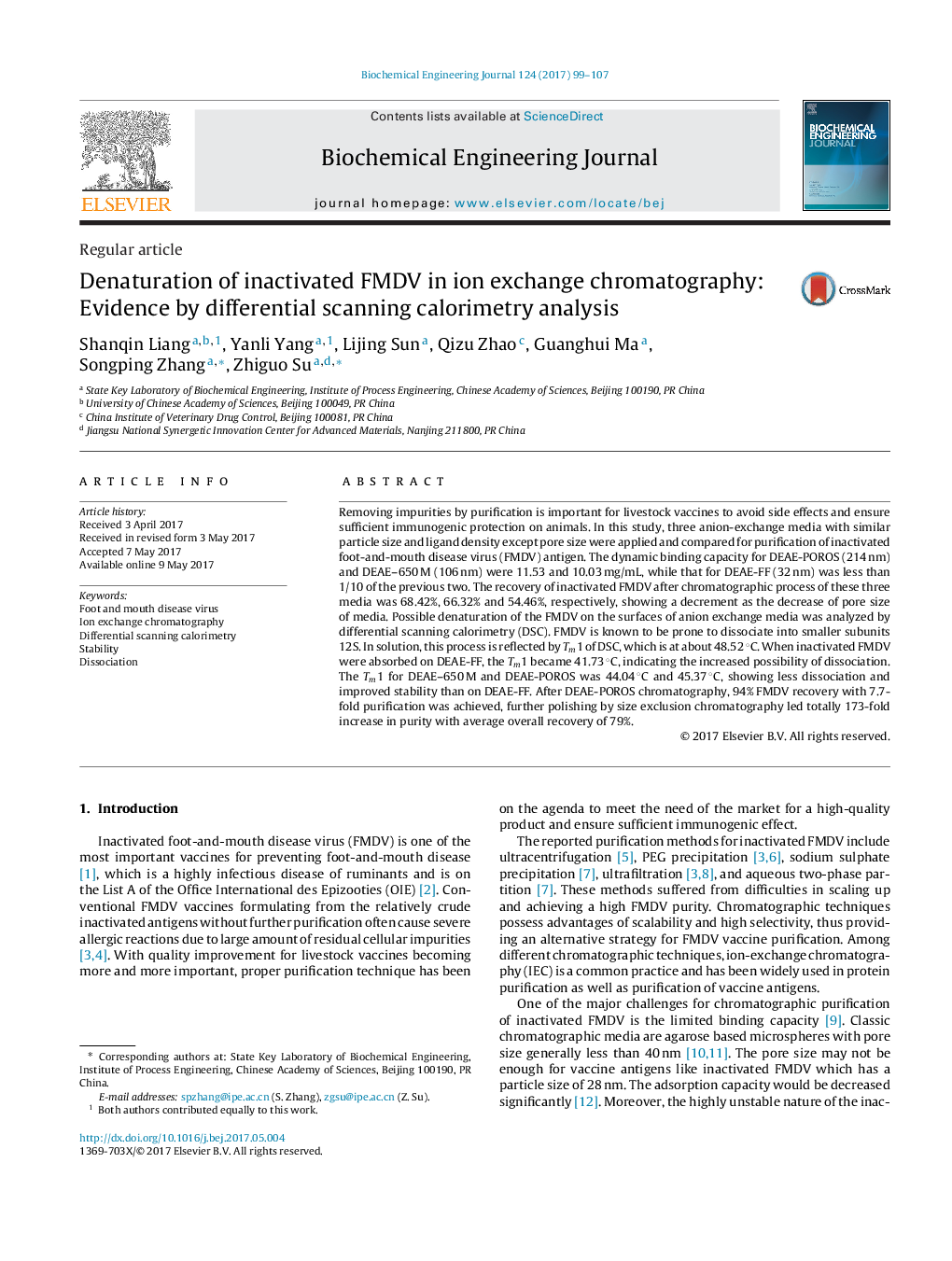| کد مقاله | کد نشریه | سال انتشار | مقاله انگلیسی | نسخه تمام متن |
|---|---|---|---|---|
| 4752159 | 1415991 | 2017 | 9 صفحه PDF | دانلود رایگان |

- FMDV tends to dissociate during IEC process thus leads to low recovery.
- Gigaporous IEC media show higher FMDV binding capacity and recovery.
- Denaturation of FMDV on the surfaces of IEC media was analyzed by DSC.
- Thermal stability of FMDV reduce more seriously on surface of agarose media with small pore size.
- FMDV shows higher thermostability on gigaporous media than on agarose media.
Removing impurities by purification is important for livestock vaccines to avoid side effects and ensure sufficient immunogenic protection on animals. In this study, three anion-exchange media with similar particle size and ligand density except pore size were applied and compared for purification of inactivated foot-and-mouth disease virus (FMDV) antigen. The dynamic binding capacity for DEAE-POROS (214 nm) and DEAE-650 M (106 nm) were 11.53 and 10.03 mg/mL, while that for DEAE-FF (32 nm) was less than 1/10 of the previous two. The recovery of inactivated FMDV after chromatographic process of these three media was 68.42%, 66.32% and 54.46%, respectively, showing a decrement as the decrease of pore size of media. Possible denaturation of the FMDV on the surfaces of anion exchange media was analyzed by differential scanning calorimetry (DSC). FMDV is known to be prone to dissociate into smaller subunits 12S. In solution, this process is reflected by Tm1 of DSC, which is at about 48.52 °C. When inactivated FMDV were absorbed on DEAE-FF, the Tm1 became 41.73 °C, indicating the increased possibility of dissociation. The Tm1 for DEAE-650 M and DEAE-POROS was 44.04 °C and 45.37 °C, showing less dissociation and improved stability than on DEAE-FF. After DEAE-POROS chromatography, 94% FMDV recovery with 7.7-fold purification was achieved, further polishing by size exclusion chromatography led totally 173-fold increase in purity with average overall recovery of 79%.
Journal: Biochemical Engineering Journal - Volume 124, 15 August 2017, Pages 99-107